
The Triple Whammy
August 1, 2018
Some unique climatic factors impacted Missouri over the past year and made it particularly challenging for agriculture, especially as it relates to forage.
A prolonged period of dryness, beginning last summer, persisted into the summer of 2018. Some of the largest precipitation deficits in the central United States occurred in Missouri, Figure 1.
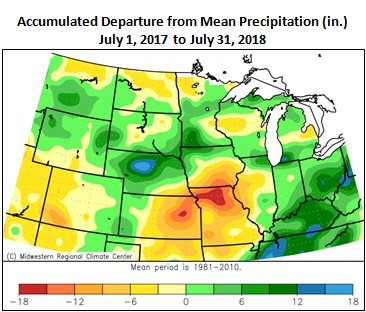
Figure 1.
In 2017, fall and early winter dryness provided little opportunity for cool season recharge of the soil profile and surface water supplies. It was the driest Sep-Jan period in Missouri in over 40 years, Figure 2. According to livestock specialists, it was a terrible autumn for pasture/stockpile growth. In November, livestock producers had been feeding hay for at least a couple months, since many pastures had no forage available.
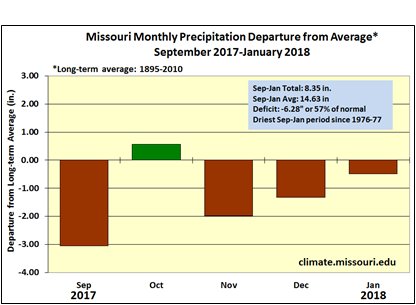
Figure 2.
In 2018, it was a year without a spring in Missouri. April temperatures were March-like and May acted like June, Figure 3. The extreme flip in monthly spring temperatures was unprecedented in 124 years of climate observations. Existing stressed pastures took another hit because of these extreme conditions, with leaf mass and nutrient quality reduced.
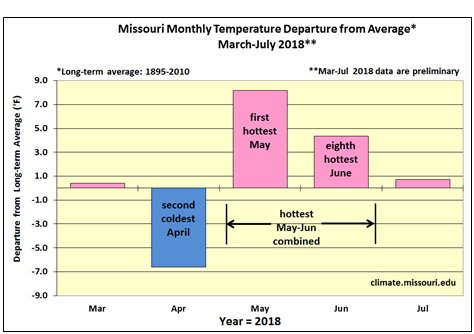
Figure 3.
Hot, dry June weather exacerbated the stressful conditions. It was the hottest May-Jun period on record, Figure 4.

Figure 4.
As spring transitioned to summer, Missouri remained a bullseye for drought in the central U.S., Figure 5, and monthly precipitation deficits continued to accumulate, Figure 6.
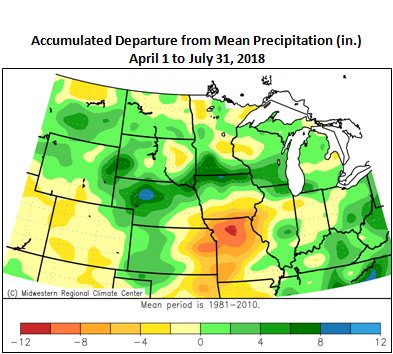
Figure 5.
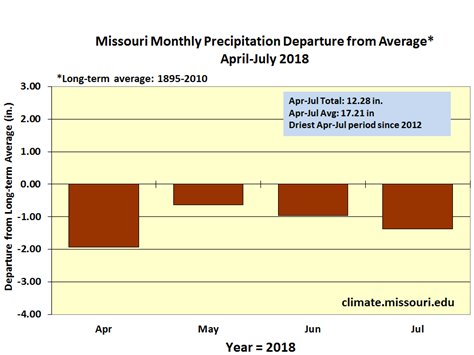
Figure 6.
In summary, 3 climatic scenarios impacted Missouri over the past 12-months, making it a challenging and difficult year for agriculture, particularly forage.
The Triple Whammy
- Fall and early winter drought;
- Unprecedented spring flip in monthly temperature anomalies
(2nd coldest April followed by hottest May on record; - Summer heat and drought.
Respectfully,
Patrick Guinan
Extension/State Climatologist
University of Missouri
113 Waters Hall
Columbia, Missouri 65211
Email: guinanp@missouri.edu
http://climate.missouri.edu
PH: 537-882-5908












